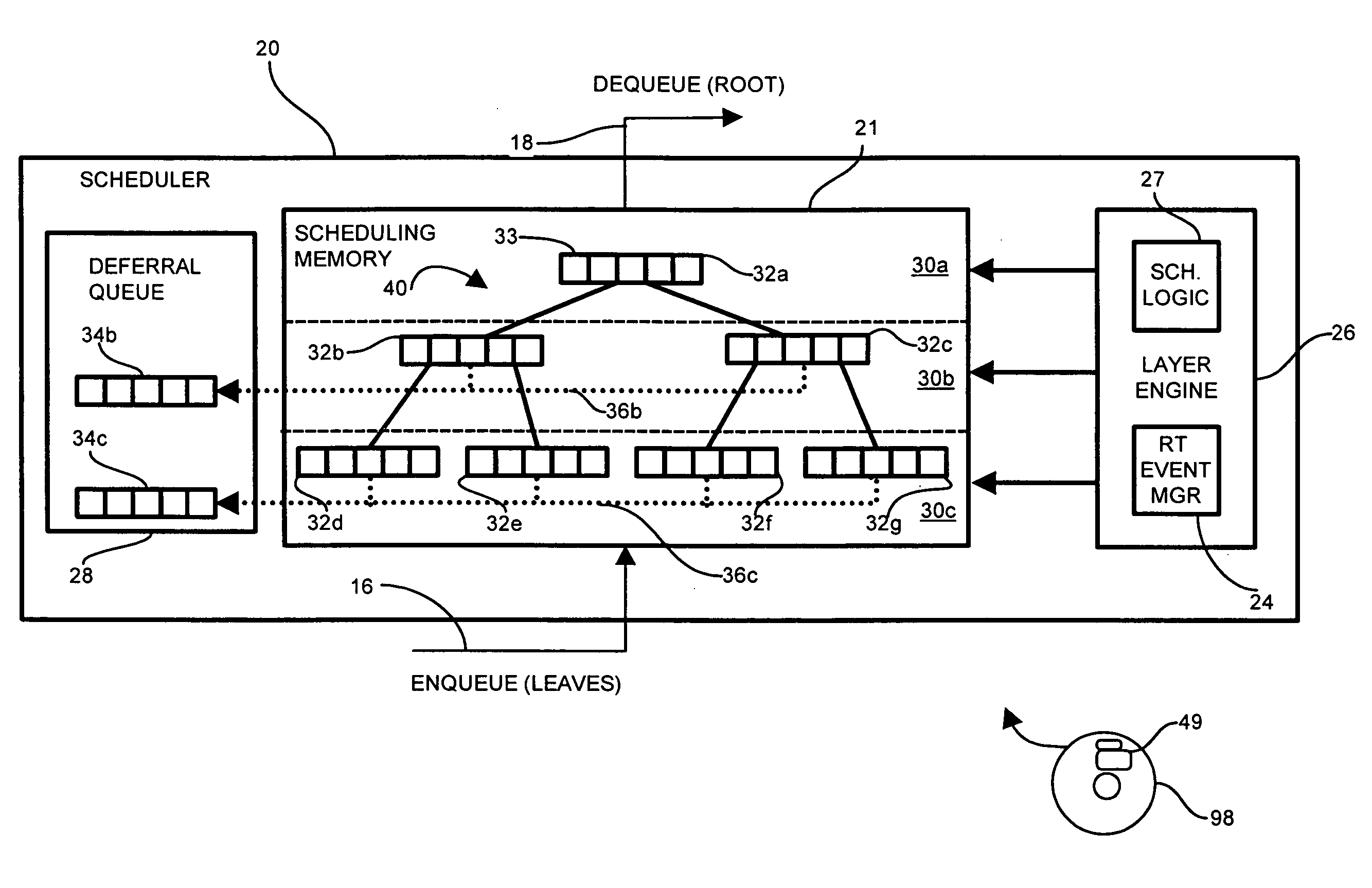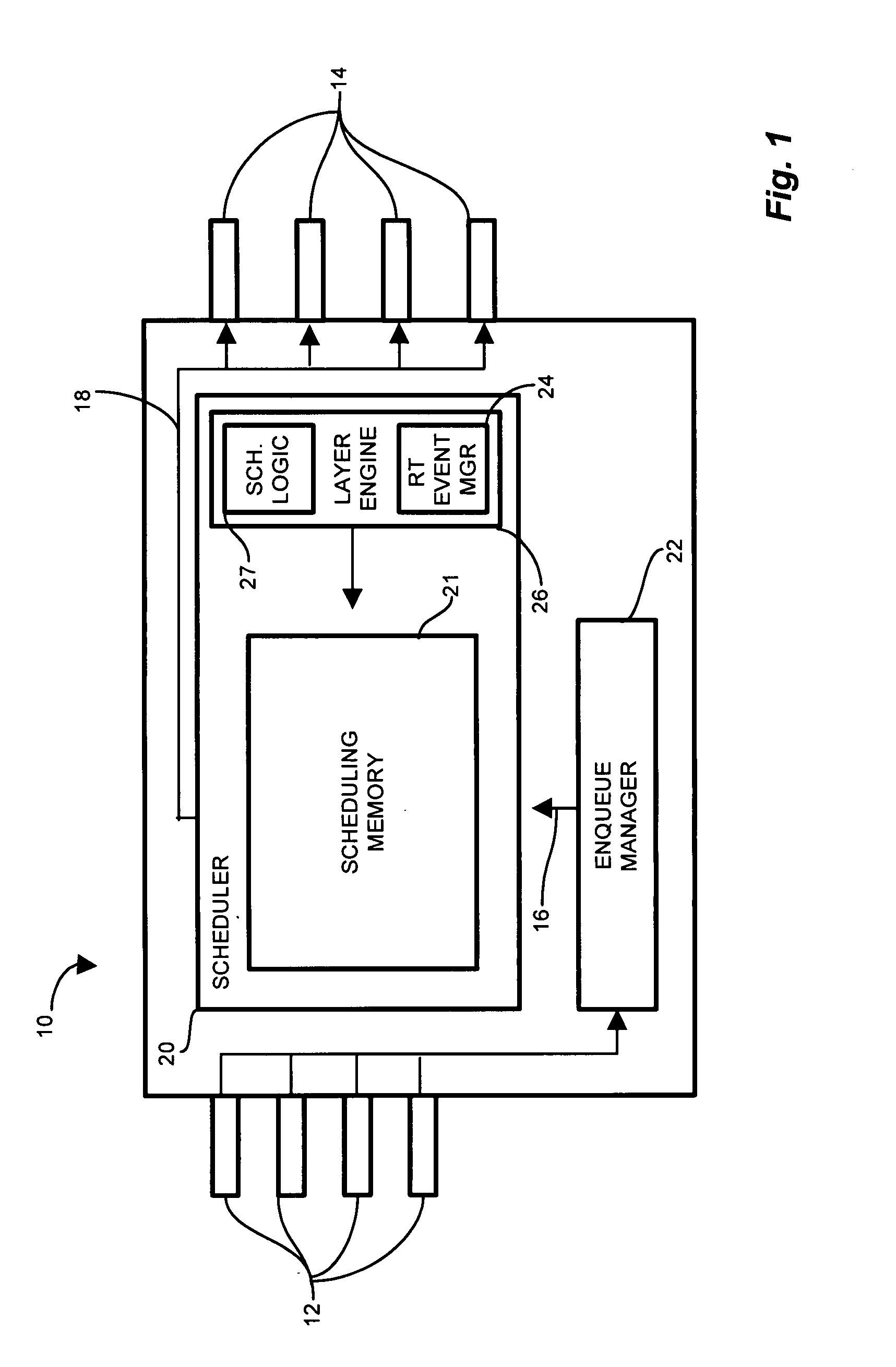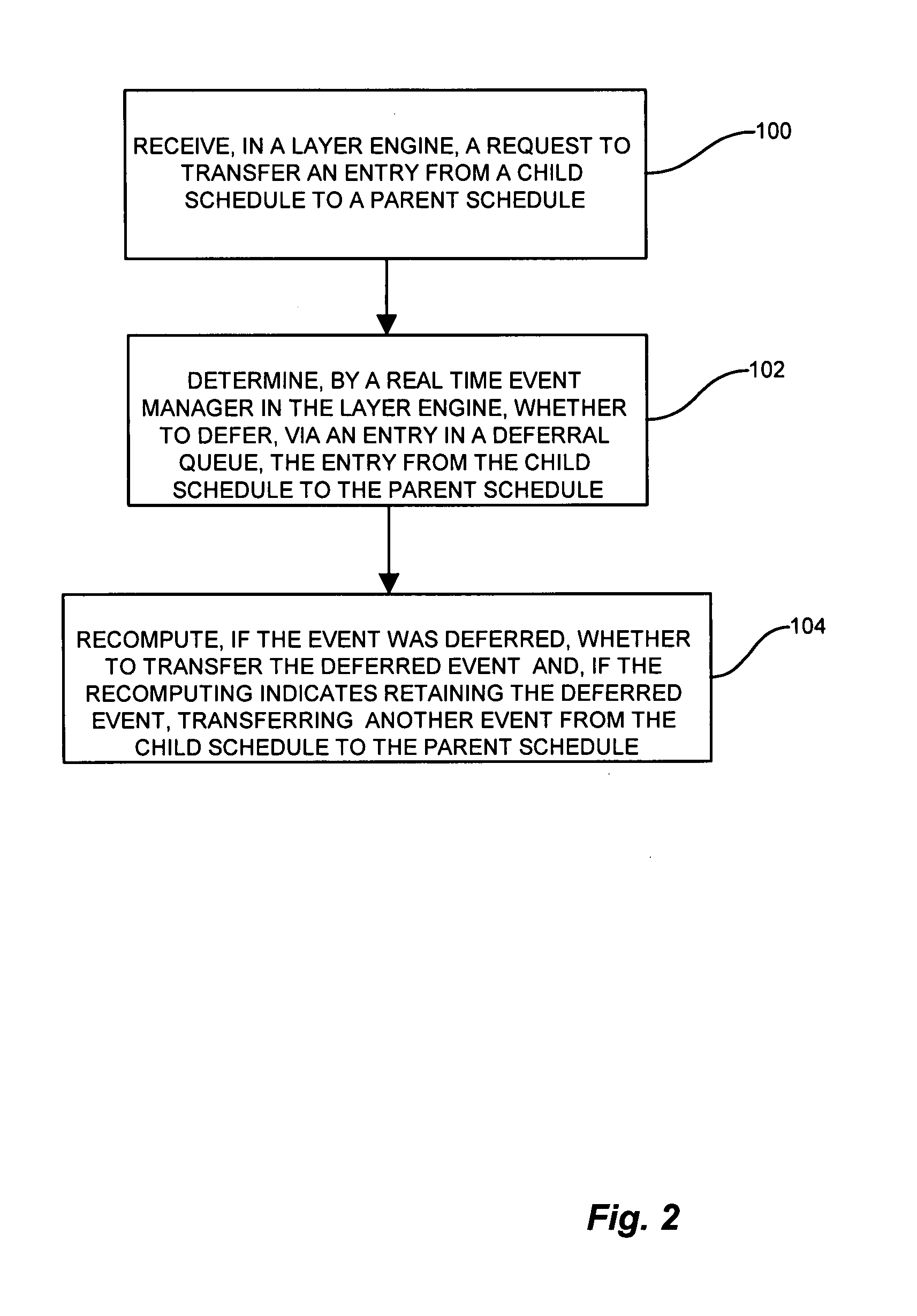Hierarchical scheduler inter-layer eligibility deferral
- Summary
- Abstract
- Description
- Claims
- Application Information
AI Technical Summary
Benefits of technology
Problems solved by technology
Method used
Image
Examples
Embodiment Construction
[0027]The present invention substantially overcomes the drawbacks discussed above with respect to propagating, or pushing, entries from a child schedule to the parent schedule. In the system of the present invention, the child schedule employs a deferral queue in the scheduler for deferring entries in response to pop requests from the corresponding parent schedule. The child schedule, when no entries are available to push to the parent (i.e. not ready for transmission), instead defers entries in response to the pop request by creating corresponding deferral entries in the deferral queue because it cannot provide an entry which is eligible for transmission to the parent schedule. The child schedule sets the readiness time corresponding to the deferral queue entry. Upon the expiration of the readiness time, the child schedule redetermines whether to push an entry to the parent schedule, and further, whether to push the entry corresponding to the deferral queue entry or optionally to p...
PUM
 Login to View More
Login to View More Abstract
Description
Claims
Application Information
 Login to View More
Login to View More - R&D
- Intellectual Property
- Life Sciences
- Materials
- Tech Scout
- Unparalleled Data Quality
- Higher Quality Content
- 60% Fewer Hallucinations
Browse by: Latest US Patents, China's latest patents, Technical Efficacy Thesaurus, Application Domain, Technology Topic, Popular Technical Reports.
© 2025 PatSnap. All rights reserved.Legal|Privacy policy|Modern Slavery Act Transparency Statement|Sitemap|About US| Contact US: help@patsnap.com



